Results 11,881 to 11,890 of 12089
Thread: Anandtech News
-
09-12-23, 04:59 PM #11881
Anandtech: TSMC Buys 10% Stake in IMS Nano from Intel
Intel and TSMC have announced an agreement in which TSMC will acquire a 10% stake in IMS Nanofabrication. IMS, controlled by Intel, produces multi e-beam photomask writing tools, whose significance is on the rise. TSMC has collaborated with IMS Nano since 2012, and this investment is expected to deepen their partnership.
TSMC's acquisition of a 10% stake in IMS Nano is priced at $430 million, aligning with the company's valuation of approximately $4.3 billion. Earlier this year, Intel divested a 20% stake in IMS Nano to Bain Capital for $860 million, aiming to enhance its independence and valuing the company at the same $4.3 billion. After this transaction with TSMC, Intel will still hold about 70% of the multi-e-beam photomask tool company.
"TSMC has been working with IMS since 2012 on the development of multi-beam mask writers for advanced technology nodes," said Kevin Zhang, senior vice president of business development at TSMC. "This investment continues the long-term partnership between TSMC and IMS to accelerate innovation and enable deeper cross-industry collaboration."
IMS Nanofabrication specializes in creating multi e-beam photomasks writing tools. The use of multiple e-beams accelerates the photomask creation process, a crucial advancement given that photomasks degrade faster with extreme ultraviolet (EUV) lithography. These multi e-beam tools enable chipmakers like Intel and TSMC to swiftly make minor adjustments to pellicles as part of yield improvements, variability lowering, and performance enhancement processes. Several years down the road these tools will be used for crafting photomasks for upcoming technology nodes that will use High-NA EUV lithography.
"We are delighted to bring in new investors to help us build on IMS's leadership in multi-beam mask writing, which is the backbone of innovation in leading-edge semiconductor technologies," said Elmar Platzgummer, chief executive of IMS. "This is a testament to IMS’ expertise and leadership position in this integral technology. Together with our partners, we look forward to continuing to support innovation of next-generation technologies and deliver value across the semiconductor ecosystem."
Intel believes that increased autonomy of IMS will positively impact the whole semiconductor production landscape by enabling the company to strategically tap into the expanding potential of multi-beam mask writing tools in the coming decade and further into the future.
More...
-
09-14-23, 12:02 PM #11882
Anandtech: Khadas Mind Premium Review: Raptor Lake-P in a Modular Portable Workstatio
Khadas is a well-known vendor in the ARM-based single-board computer (SBC) circles. Recently, the company made its first foray into the small form-factor x86 PC space with a rather unique product - the Khadas Mind. Unlike regular mini-PCs, the Mind is actually an ecosystem of products created with the aim of bringing a portable modular workstation to the market. Rather than relying on Thunderbolt to achieve this vision, the company has created a proprietary Mind Link connector and interface with an intent to produce a more close-knit set of products.
The main processing unit in the ecosystem is the Khadas Mind, which comes with either an Intel Core i7-1360P (Mind Premium) or an Intel Core i5-1340P (Mind Standard). Equipped with the Mind Link Connector, it can interface to a variety of peripherals such as the Mind Dock and Mind Graphics. While the former provides additional I/Os, the latter is a full-featured eGPU enclosure with a variety of ports.
Khadas sent across the Mind Premium along with the Mind Dock to provide us with an introduction to the Mind ecosystem. Read on for a detailed investigation into the performance and product experience delivered by Raptor Lake-P in an unusual package.
More...
-
09-15-23, 03:37 PM #11883
Anandtech: ASRock's Low-Profile Arc A310 Fits Every PC and Every Budget
ASRock this week has introduced an Intel Arc-based A310 Low Profile 4 GB graphics card. Aimed at the lower power/size/cost portion of the video card market, the entry-level A310 card carries a cut-down ACM-G11 GPU with 768 stream processors operating at 2.0 GHz and a 64-bit memory interface that connects 4 GB of GDDR6. And while its performance isn't anything to write home about, it fills out ASRock's lineup with a budget video card that can also easily be placed into low profile systems.
Performance vise, ASRock's Arc A310 Low Profile graphics card should be comparable to higher-end integrated graphics solutions - which is to say that it's more for general desktop work than demanding games. Notably, as a current-generation Arc card, it incorporates Intel's feature-packed media playback engine, with hardware encoding and decoding for the majority of popular formats, such as AV1, H.264, H.265, and VP9, which makes it a good solution for home theater PCs (HTPCs) as well as office PCs.
The low-profile card offers two display outputs, a DisplayPort (2.0) and an HDMI port (2.0b). In terms of power consumption, this is a sub-75W card (ASRock doesn't give a more precise figure than that), so you won't find any external power connectors as it's entirely bus-powered. Meanwhile, it looks like ASRock has opted to recycle the same dual-slot dual-fan cooling system they use for their other low-profile Arc card, the low-profile ASRock Arc A380.
Wrapping things up, ASRock has not listed a price for the card. Though judging from the cost of other Arc A310 cards on the market, it's likely to end up hitting shelves in the low $100 range.
More...
-
09-16-23, 11:55 AM #11884
Anandtech: Intel Broadens FPGA Range with New Products Across All Six FPGA Platforms
Intel's Programmable Solutions Group (PSG) is broadening its FPGA product range with the introduction of six new programmable platforms aimed at different types of customers and workloads. In addition to a new sub-family of Agilex 5-series offerings, Intel is launching its all-new Agilex 3 series offerings along with new Agilex.
The highlight of today's announcement is the Intel Agilex 3 FPGA series of power and cost-optimized FPGAs in compact form factors. The family includes the Agilex 3 B-series FPGAs that boast a higher I/O density in compact form factors (compared to Intel Max 10 FPGAs) and are optimized for board and system management, including server platform management applications.
On the other side of the Agilex 3 spectrum is the C-series FPGAs that are engineered to provide supplementary capabilities, making them apt for a broad spectrum of complex programmable logic devices (CPLD) and FPGA applications across various industries. Intel says that its Agilex 3-series FPGAs will be available soon without disclosing when exactly.
Another noteworthy introduction is the Intel Agilex 5 FPGA E-series based on the 2nd Generation Hyperflex FPGA architecture and tailored for embedded edge applications and therefore featuring high performance efficiency. Intel produces these FPGAs in house using its Intel 7 manufacturing technology (formerly known as 10 nm Enhanced SuperFin), which is why it says that these parts deliver 1.6 times higher performance per watt compared to competing FPGAs made on a 16 nm-class process technology (possibly referring to Xilinx's FPGAs built in this process node). Additionally, this FPGA series integrates an AI tensor block, a feature previously exclusive to Intel's premium programmable parts, positioning it as a solution for edge AI tasks. Intel will start sampling Agilex 5 E-series parts with design software in Q1 2024. A system simulator for these FPGAs will be available in the cloud in late 2024.
Intel also said that it had begun shipments of its Intel Agilex 7 FPGAs with the R-Tile chiplet. These FPGAs offer a PCIe 5.0 interface with the CXL protocol on top that allow to quickly deploy programmable accelerators for specific tasks that can benefit from higher bandwidth and lower latencies.
In addition to revealing new FPGAs, Intel also said that the first commercial product based on its F2000X infrastructure processing unit platform is now shipping. The part is the Napatech F2070X IPU that has two 100 GbE ports and is powered by the Agilex AGFC023 FPGA and an Intel Xeon D SoC.
Rounding off the new introductions is the Nios V/c compact microcontroller, which is a soft-core IP, based on the RISC-V architecture, which can be programmed using the company's Quartus Prime Pro software.
More...
-
09-18-23, 11:05 AM #11885
Anandtech: AMD Releases EPYC 8004 "Siena" CPUs: Zen 4c For Edge-Optimized Server Chip
AMD this morning is releasing the fourth and final member of its 4th generation EPYC processor family, the EPYC 8004 series. Previously disclosed under the codename Siena, the EPYC 8004 series is AMD’s low-cost sub-set of EPYC CPUs, aimed at the telco, edge, and other price and efficiency-sensitive marketing segments. Based on the same Zen4c cores as Bergamo, Siena is basically Bergamo-light, using the same hardware to offer server processors with between 8 and 64 CPU cores.
First unveiled by AMD last summer at Financial Analyst Day 2022, Siena is AMD’s first dedicated entry into the telco, networking, and edge market. Compared to AMD’s general-purpose Genoa chips (EPYC 9004), Siena offers fewer CPU cores and lower performance overall, instead optimizing the chips and platform for lower costs and better energy efficiency for use in non-datacenter environments. More broadly speaking, this is the low-end segment of the 4th generation EPYC stack.
More...
-
09-18-23, 11:05 AM #11886
Anandtech: Intel Shows Off Work on Next-Gen Glass Core Substrates, Plans Deployment L
Although Intel’s annual Innovation event doesn’t kick off until tomorrow, the company is already publishing some announcements ahead of the show – and it’s not the trivial stuff, either. This morning the company is showing off their initial work on developing a glass core substrate and associated packaging process for their chips. As a result of their progress with research and development on the glass cores, Intel is now planning on introducing glass core substrates to its products in the second half of this decade, allowing them to package chips in more complex, and ultimately higher-performing configurations.
There’s a lot to unpack from Intel’s relatively short announcement, but at a high level, glass core substrates have been under research for over a decade as a replacement for organic substrates, which are widely used in current-generation processors. Essentially the medium that typical silicon dies sit on, substrates play an important part in chip packaging. First and foremost, they provide the structural stability for a chip (silicon dies are quite fragile and flimsy), and they are also the means through which signals from silicon dies are carried, either to other on-package dies (i.e. chiplets), or to the large number of relatively sizable pins/pads on the back side of a chip. And, as chip sizes have increased over the years – and the number of pins/signals required by high-end chips has, as well – so has the need for newer and better materials to use as a substrate, which is what’s been driving Intel’s latest accomplishment.
Ultimately, what Intel is aiming to do with glass core substrates is to improve upon what can be done with existing organic substrates, allowing for larger chips with more signals to be routed through the substrate more cleanly. And while this will potentially have benefits for all chips over a long enough time, the immediate focus is on high-end, multi-chiplet processors, where glass core substrates will offer better mechanical stability, better signal integrity, and the ability to more easily route a larger number of signals through a non-silicon medium. In short, Intel considers it one of the keys to making high-performance processors in the next decade.
More...
-
09-19-23, 03:42 PM #11887
Anandtech: Intel Demos Lunar Lake Client Processor In Action, Silicon Pulled In To In
As part of Intel’s Innovation 2023 conference, the company is not only showing off their current and soon-to-be-current products like Meteor Lake, but the forward-looking keynote by CEO Pat Gelsinger was also used to showcase future generations of Intel products. Perhaps the biggest surprise this year being Intel’s Lunar Lake platform, which is already up and running to the point where Intel can do demos on it.
Lunar Lake is Intel’s 2025 client platform, which is scheduled to arrive after Meteor Lake (very late 2023) and Arrow Lake (2024). At last disclosure from Intel, it is going to be a brand-new platform, replacing the shared Meteor/Arrow platform. At this point, confirmed details are few and far between, other than that it will be bigger and better than Meteor Lake.
In any case, as part of this year’s Innovation keynote, Gelsinger & co ran a pair of AI demos on their Lunar Lake test box. The first was Riffusion, an AI music generation plugin for Audacity that can generate music based on the style of another artist. The second demo was the now classic Stable Diffusion text-to-image generation model. Both demos were able to leverage the chip’s NPU, which is a new processing block for Intel client chips starting with the impending Meteor Lake.Intel Client Processor Roadmap Name P-Core uArch E-Core uArch Process Node
(Compute Tile)Release Year Meteor Lake Redwood Cove Crestmont Intel 4 2023 (December) Arrow Lake Lion Cove? Crestmont? Intel 20A 2024 Lunar Lake Lion Cove? Skymont? Intel 20A 2024? Panther Lake ? ? Intel 18A 2025
And while the demo was brief, it served its purpose: to show that Lunar Lake was back from the fab, and was already in good enough shape not just to boot and OS, but to show off controlled demos. Intel has made it clear over the past few years that they intend to move fast to make up for lost time and recapture leadership of the client market (both in terms of architecture and fabs), so they are eager to show off their progress here.
Perhaps the most interesting thing about the demo was what wasn’t said, however: the process node used for Lunar Lake’s compute (CPU) tile. In Intel’s earliest (and still most recent) public roadmap, Lunar Lake was listed to be built on the Intel 18A process. However, other disclosures from Intel today indicate that they’re only going to be starting risk production of 18A silicon in Q1’2024. Which means that for Lunar Lake to be working today, it can’t be on 18A.
That leaves 20A as by far the most likely alternative, which is due sooner and is already turning out working wafers. Which means that Intel is planning on using 20A over two generations of client processors: Arrow Lake and Lunar Lake. We’re still waiting on confirmation of this, of course, but all signs currently point to Lunar Lake having shifted to 20A since Intel’s previous update.
More...
-
09-19-23, 03:42 PM #11888
Anandtech: Intel Unveils Meteor Lake Architecture: Intel 4 Heralds the Disaggregated
During the opening keynote at Intel's Innovation event in San Jose, Chief Executive Officer Pat Gelsinger unveiled a score of details about the upcoming Meteor Lake client platform. Intel's Meteor Lake marks the beginning of a new era for the chipmaker, as they move away from the chaotic Intel 7 node and go into a rollout of their Foveros 3D packaging with EUV lithography for their upcoming client mobile platform. Meteor Lake uses a tiled, disaggregated chiplet architecture for its client-centric processors for the first time, changing the very nature of Intel's consumer chips going forward. And, according to Intel, all of these changes have allowed them to bring some significant advancements to the mobile market.
Intel's first chiplet-based consumer CPU breaks up the common functions of a modern CPU into four individual tiles: compute, graphics, SoC, and an I/O tile. Within the makeup of the compute tile is a new pair of cores, a P-core named Redwood Cove and a new E-core called Crestmont. Both these cores promise IPC gains over their previous counterparts, but perhaps the most interesting inclusion is a new type of E-core embedded directly into the SoC tile, which Intel calls 'Low Power Island.' These new LP E-cores are designed with the idea that light workloads and processes can be taken off the more power-hungry compute tile and offloaded onto a more efficient and lower-powered tile altogether. Other major additions include a first-for-Intel Neural Processing Unit (NPU), which sits within the SoC tile and is designed to bring on-chip AI capabilities for workloads and inferencing, paving the way for the future.
With Meteor Lake, Intel is aiming to put themselves in a more competitive position within the mobile market, with notable improvements to compute core hierarchy, Intel's Xe LPG Arc-based graphics tile looking to bolster integrated graphics capabilities, and an NPU that adds various AI advantages. Meteor Lake also sets the scene for Intel and modular disaggregation, with Foveros 3D packaging set to become a mainstay of Intel's processor roadmap for the future, with the Intel 4 process making its debut and acting as a stepping stone to what will become Intel's next mainstay node throughout its fabs, Intel 3.
More...
-
09-20-23, 08:49 AM #11889
Anandtech: Asus Quietly Begins to Sell Cheap ROG Ally Console with Non-Extreme CPU
With a plethora of news coming from Intel early this week, it went almost unnoticed that Asus has begun to sell an inexpensive version of its ROG Ally portable game console. Unlike the original one, this unit carries AMD's Ryzen Z1 non-extreme accelerated processing unit that offers tangibly lower performance, which makes the gaming systems considerably less capable.
The original Asus ROG Ally portable game console for $699 is based on the AMD Ryzen Z1 Extreme system-on-chip featuring eight Zen 4 general-purpose cores and a Radeon GPU featuring 12 RDNA 3 compute units (768 stream processors). By contrast, the cheaper Asus ROG Ally is powered by the vanilla AMD Ryzen Z1 that has six Zen 4 cores and a Radeon GPU with four RDNA 3 compute units (256 stream processors), which translates into a 25% lower general-purpose performance and a whopping 67% lower graphics performance.
While a 20% lower CPU performance will inevitably affect game performance, it will not be a substantial performance drop; a 66% lower GPU performance will however dramatically drop framerates. Those gamers accustomed to the original ROG Ally performance based on the Ryzen Z1 Extreme SoC will probably find framerates on the cheaper model in demanding games unplayable.
The cheaper version of the ROG Ally (RC71L-ALLY.Z1_512) is priced at $599 and can be ordered directly from Asus and Best Buy. By contrast, the higher-end version of the ROG Ally is officially priced at $699, and the unit is listed by virtually all retailers, including Amazon and Newegg. Whether $100 justifies up to 66% graphics performance degradation or not is something for everyone to decide, but it should be noted that getting an ROG Ally with Ryzen Z1 Extreme at its MSRP is pretty hard.
Asus says that the only difference between $699 and $599 ROG Ally is the SoC, so the cheaper model still has a 7-inch display with a resolution of 1920x1080 and a 120 Hz refresh rate, 16 GB of LPDDR-6400 memory, a 512 GB SSD, and similar controls. Unfortunately, it is impossible to upgrade the handheld game console, and the only way to improve its performance if it is not enough is to attach an external GPU using the company's proprietary ROG XG Mobile connector, which will cost well over $1000.
More...
-
09-20-23, 05:05 PM #11890
Anandtech: Intel Announces Panther Lake Client Platform, Built on Intel 18A For 2025
While the primary focus has been on Intel's impending Meteor Lake SoC due by the end of the year, Intel CEO Pat Gelsinger unveiled more about their current client processor roadmap. Aside from a demo showing off a 'Lunar Lake' test box, Pat Gelsinger also announced Panther Lake, a new Intel client platform that is on track for a release sometime in 2025.
Intel's updated roadmap has given the industry a glimpse into what lies ahead. Following the much-anticipated Lunar Lake processors set for a 2024-2025 timeframe, Panther Lake is set to bring all the technological advancements of Intel's 18A node to the party.
As mentioned, Intel demoed Lunar Lake's AI capabilities with a live demo at Intel Innovation 2023. This included a pair of demos, one running an AI plugin called Riffusion within the Audacity software, which can generate music. The second was a demo running Stable Diffusion using a text-to-image generation model; it was a giraffe in a cowboy hat for reference. This was all done using a working Lunar Lake test box, which seamlessly looked to run the two demos with ease.
Pivoting to the Panther Lake, Intel, via CEO Pat Gelsinger during Intel Innovation 2023, said that it's on track for release in 2025; we also know that Intel is sending it to fabs in Q1 of 2024. This means we're getting Meteor, Arrow, Lunar, and then Panther Lake (in that order) by the end of 2025. Panther Lake aims to build on Lunar Lake with all its tiles fabricated on the advanced 18A node. While (understandably) details are thin, we don't know what P-core or E-core architectures Panther Lake will use.Intel Client Processor Roadmap Name P-Core uArch E-Core uArch Process Node
(Compute Tile)Release Year Meteor Lake Redwood Cove Crestmont Intel 4 2023 (December) Arrow Lake Lion Cove? Crestmont? Intel 20A 2024 Lunar Lake Lion Cove? Skymont? Intel 20A? 2024? Panther Lake ? ? Intel 18A 2025
Intel's Innovation 2023 event was a starting point for Intel CEO Pat Gelsinger to elaborate on a comprehensive processor roadmap beyond the much anticipated Meteor Lake SoC, with the first Ultra SKU set to launch on December 14th; this about counts as a launch this year, barring any unexpected foibles. With Panther Lake on track for a 2025 release and set to go to fabs in Q1 of 2024, Intel's ambitious "5 nodes in 4 years" strategy is in full swing. While Lunar Lake paves the way with advanced on-chip AI capabilities on the 20A node, Panther Lake aims to build upon this foundation using the more advanced 18A node.
Although specific architectural details remain scant, the sequential release of Meteor, Arrow, Lunar, and Panther Lake by the end of 2025 underscores Intel's aggressive push to redefine the client processor landscape.
More...
Thread Information
Users Browsing this Thread
There are currently 25 users browsing this thread. (0 members and 25 guests)





 Quote
Quote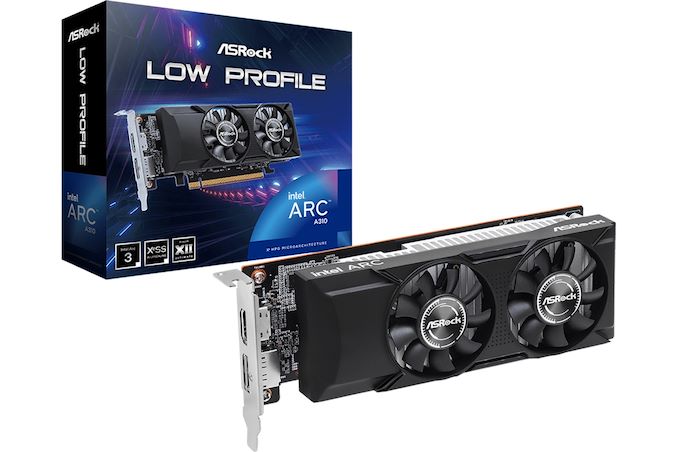
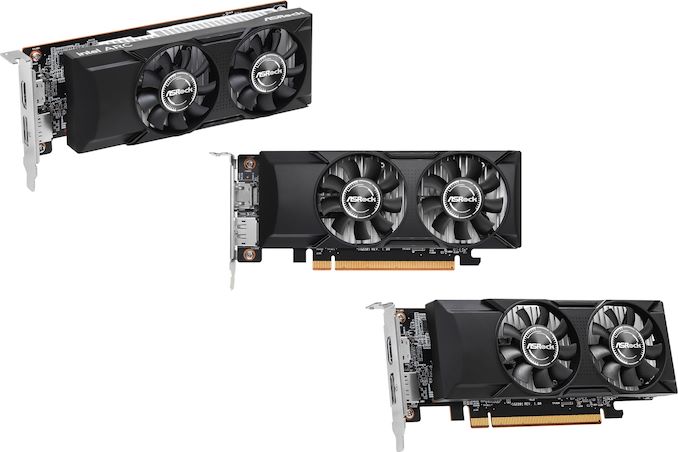
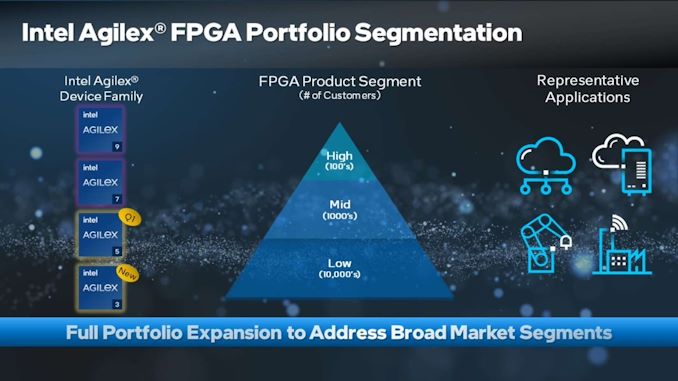
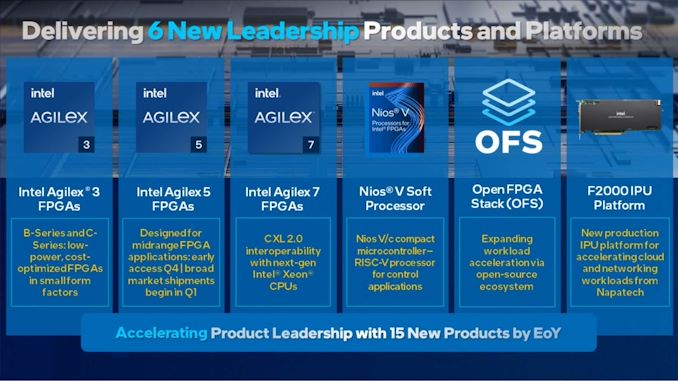
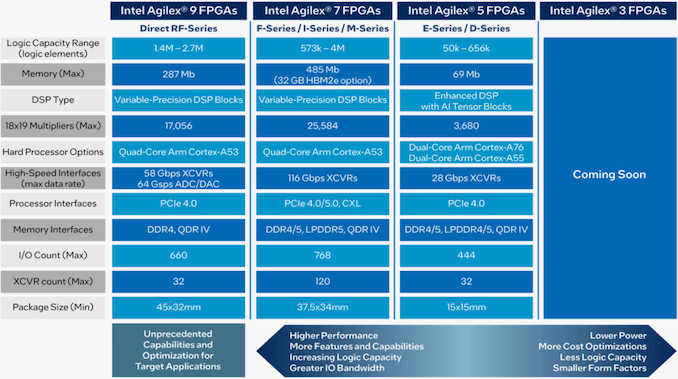
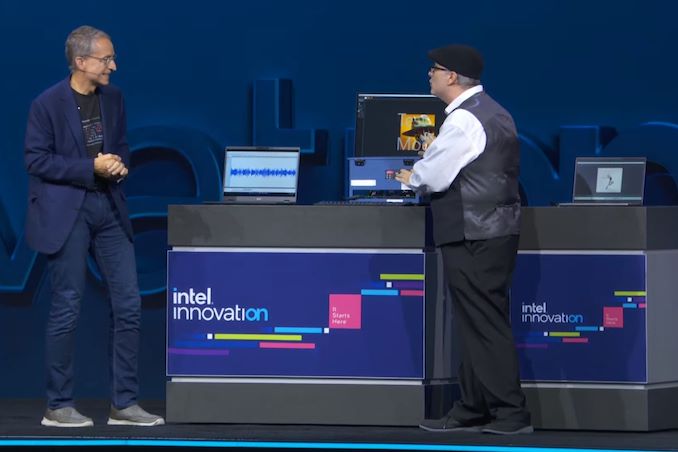
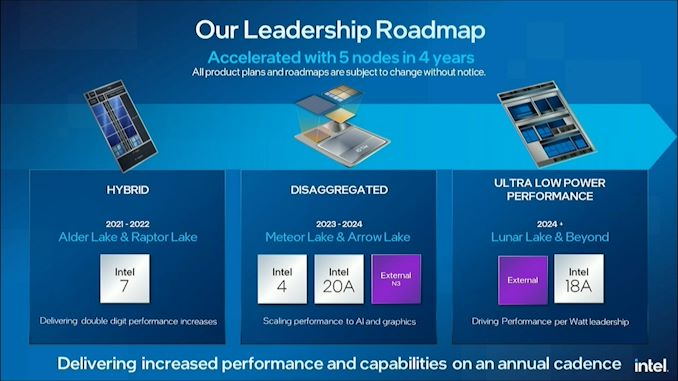
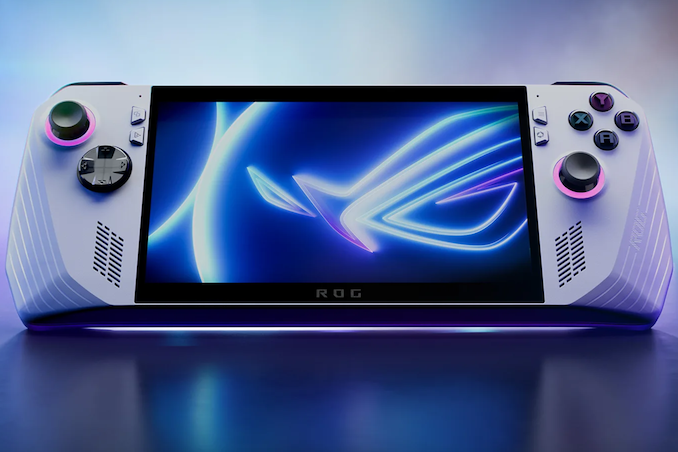
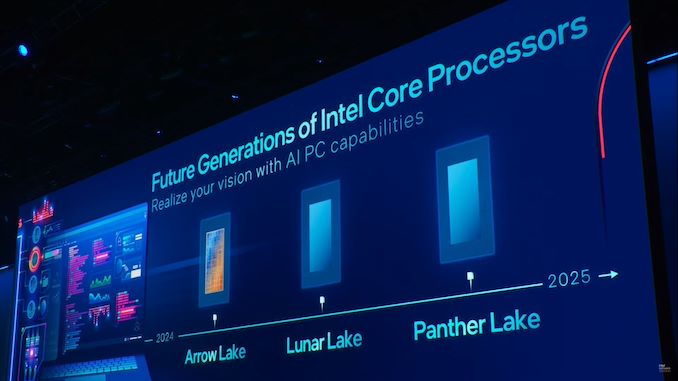
















Bookmarks